-
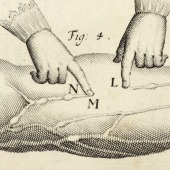
William Harvey (1578–1657), De motu cordis et sanguinis in animalibus, anatomica exercitatio ...
-
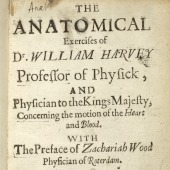
William Harvey (1578–1657), The anatomical exercises of Dr. William Harvey ... concerning the motion of the heart and blood
-
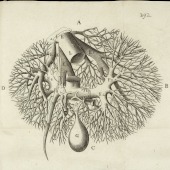
Francis Glisson (1597–1677), Anatomia hepatis. Plate facing p. 292
-
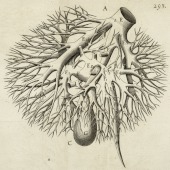
Francis Glisson (1597–1677), Anatomia hepatis. Plate facing p. 293
-
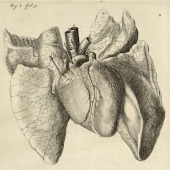
René Descartes (1596–1650), De homine. Fig. 1, flaps down
-
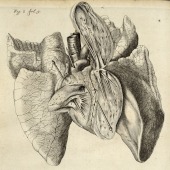
René Descartes (1596–1650), De homine. Fig. 1, flaps raised
Anatomy in action: Harvey, Glisson and Descartes
Printing the body
William Harvey’s discovery of the circulation of the blood was first published in 1628 in De motu cordis et sanguinis in animalibus, anatomica exercitatio … A radical departure from the accepted Galenic view, it gained a mixed reception. Both Francis Glisson (1597–1677) and René Descartes (1596–1650) were early defenders of Harvey, whilst differing from him in key details.
Harvey was a critical figure for Keynes, who was himself a pioneer of blood transfusion in the early twentieth century. Keynes amassed an almost complete collection of Harvey’s works, as well as an important contextual collection of books relating to the broader social and intellectual life of the seventeenth century. The works by Harvey, Glisson and Descartes displayed here are all small format ‘octavo’ editions and include detailed illustrations of parts of the body—some as fold-out plates or with flaps—showing anatomy in action.